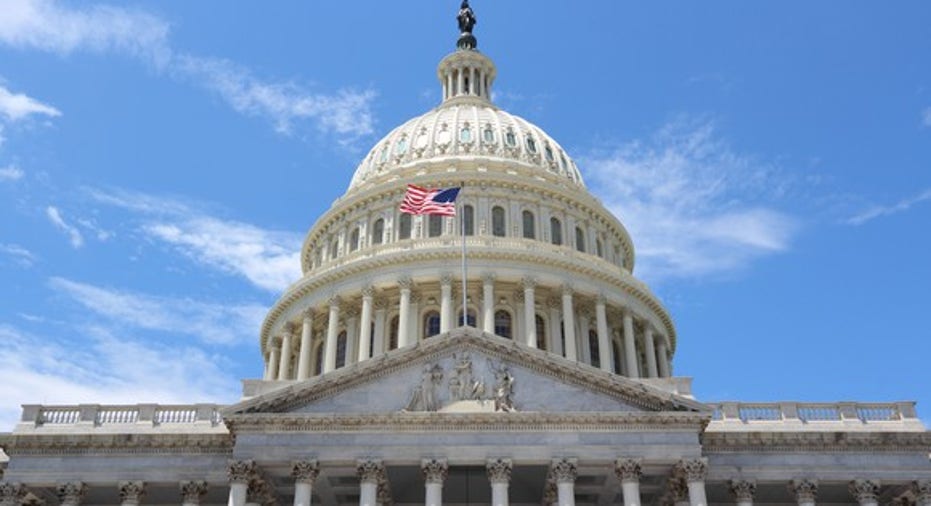What Is the Cassidy-Collins Obamacare Replacement Plan?

Repealing and replacing the Affordable Care Act, or Obamacare, was a cornerstone of Donald Trump's campaign for president. Recently, Trump said he wanted to repeal and replace Obamacare simultaneously.In response, Sen. Bill Cassidy (R-La.) and Sen. Susan Collins (R-Maine) announced a plan that returns power to the states by allowing them to choose among three options.
States can keep Obamacare, replace it with an option that funds a Roth health savings account for uninsured residents, or design their own individual plan without federal assistance.Read on to learn more about this Obamacare replacement plan.
Image source: Getty Images.
What stays the same
Ten million Americans are currently insured via plans they purchased on the Obamacare marketplace, and millions more are newly covered in states that chose to expand Medicaid.Under the Cassidy-Collins Patient Freedom Act, states that feel like Obamacare is the best solution for them can reinstate it after its repeal.
As a refresher, Obamacare mandates health insurance for all Americans, and provides a marketplace for health insurers to sell plans of varying coverage.
Premiums depend on coverage and pricing, and Americans with income up to 400% of the federal poverty level can receive subsidies that reduce their monthly premiums. Subsidies rise alongside health insurance plan premium increases, and last year, over 80% of people enrolled in Obamacare plans received them. On average, those subsidies reduced the cost of coverage to about $100 per month.
Obamacare mandates that insurers provide basic preventative services in plans. It also allows parents to keep children on their plans until age 26, and it prevents insurers from discriminating against Americans with preexisting conditions.Since its implementation, America's uninsured rate has fallen from 17% to 11%, according to Gallup.
However, patient deductibles have increased to between $5,000 and $6,000 per year for many plan participants, and although most enrollees receive subsidies, there are still millions of Americans who don't qualify for these subsidies and are therefore facing annual double-digit percentage premium increases.
What can change?
States that don't want Obamacare anymore can enact a new system that relies heavily on Roth health savings accounts.This option provides states with funding equal to 95% of federal premium tax credits and cost-sharing subsidies provided currently, as well as federal matching dollars for Medicaid expansion.
States can receive these funds in beneficiary grants or advanceable, refundable tax credits. In both cases, money is deposited into a Roth HSA for each patient and thus can be used by patients to offset out-of-pocket costsfrom their first $1 of healthcare expenses.
This option retains many of Obamacare's protections, including requiring insurers to provide coverage to people with preexisting conditions.Alternatively, if states don't like this second option, they can create their own plan, without federal help.
Puts and takes
The Cassidy-Collins plan repeals Obamacare, but it leaves in place prohibitions on annual and lifetime limits and preexisting condition exclusions, preserves guaranteed renewability, and allows kids to remain on their parents' plan until age 26.
States can reinstate Obamacare, but they may find the new alternative program to be more comprehensive.
While Obamacare relies on patients to enroll in it, the new option has states automatically enrolling their uninsured residents, unless residents opt out. As a result, this plan may sidestep the risk of creating unprofitable patient pools that tilt too far to those who are old and sick and thus require more healthcare. A common complaint from insurers is that too few healthy people enroll in Obamacare, and as a result, insurers can't turn a profit on Obamacare plans.
Last year, losses on Obamacare plans prompted UnitedHealth Group, the nation's largest health insurer, to stop selling Obamacare plans in most states. Other insurers, including Humana, similarly reduced their participation in the program because of losses.
The reliance of the plan on Roth HSAs is also intriguing. By combining a Roth HSA, a high-deductible health plan, and a basic pharmacy plan, patients may be able to lower their annual spending on healthcare. If patients don't use the money placed in their Roth HSA, it can roll over year after year, and premiums for high-deductible plans are typically lower than other plans, providing additional savings. Americans who want more comprehensive healthcare coverage can select a more expensive plan.
Also, this Obamacare replacement option limits out-of-network surcharges for emergency care, which can bust a patient's budget, and it requires healthcare providers, such as hospitals, to post "cash prices," so patients can shop for the best deal.
Overall, there's no telling if Cassidy and Collins' repeal and replace plan can win enough momentum to gain Trump's support, but given that he's said in the past that he wants to provide coverage for everyone, it could be a winner.
The $15,834 Social Security bonus most retirees completely overlook If you're like most Americans, you're a few years (or more) behind on your retirement savings. But a handful of little-known "Social Security secrets" could help ensure a boost in your retirement income. For example: one easy trick could pay you as much as $15,834 more... each year! Once you learn how to maximize your Social Security benefits, we think you could retire confidently with the peace of mind we're all after.Simply click here to discover how to learn more about these strategies.
Todd Campbell has no position in any stocks mentioned.His clients may have positions in the companies mentioned.The Motley Fool recommends UnitedHealth Group. The Motley Fool has a disclosure policy.